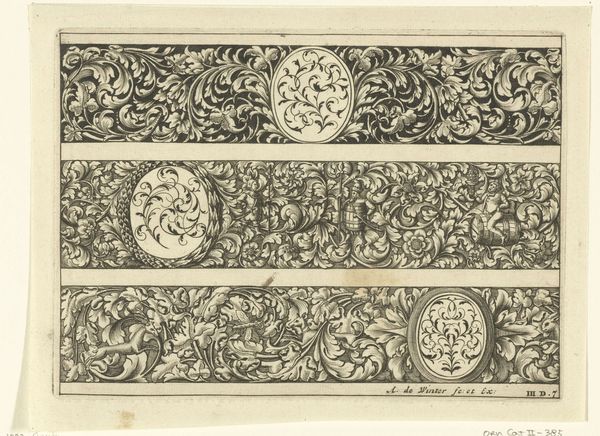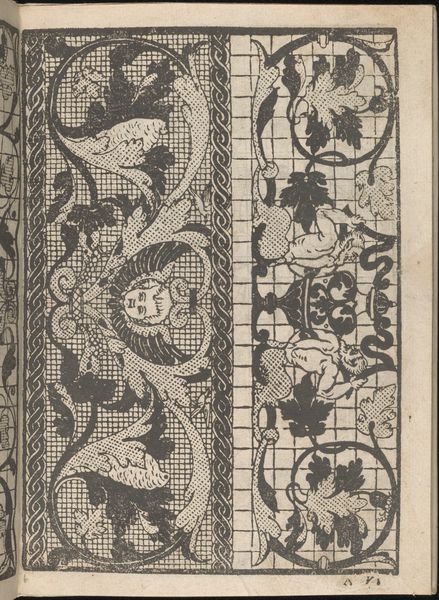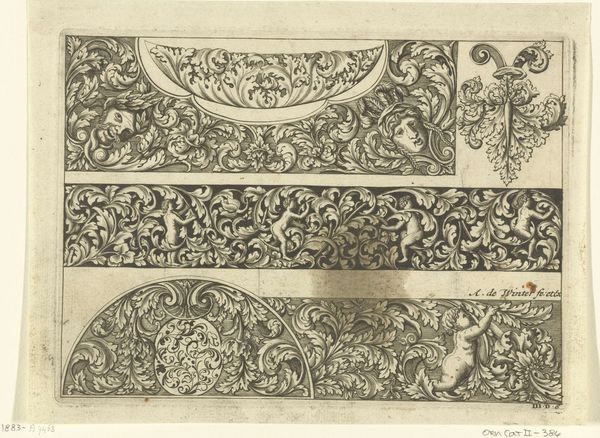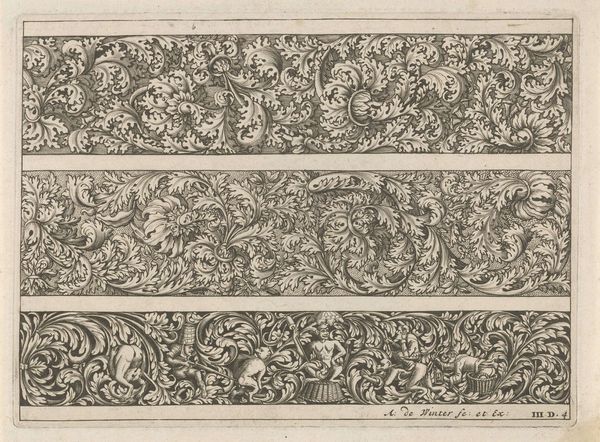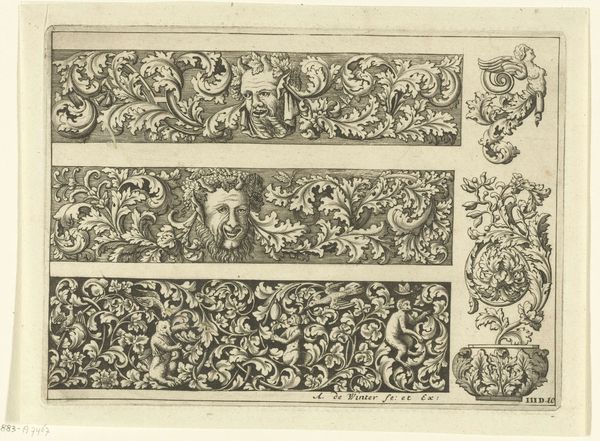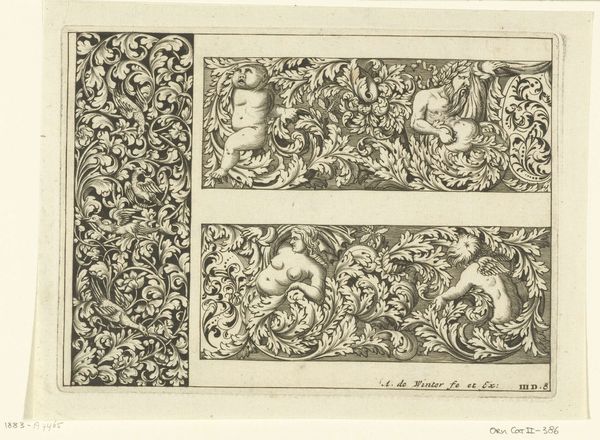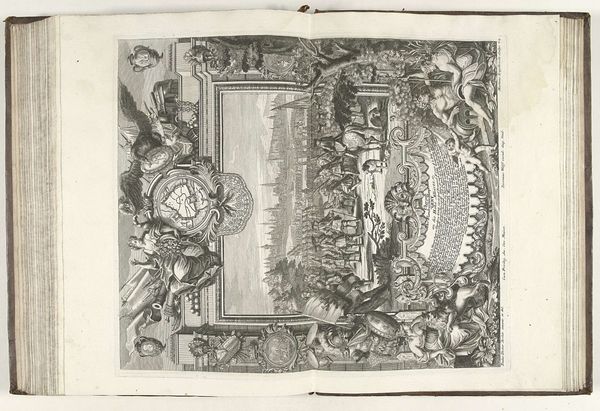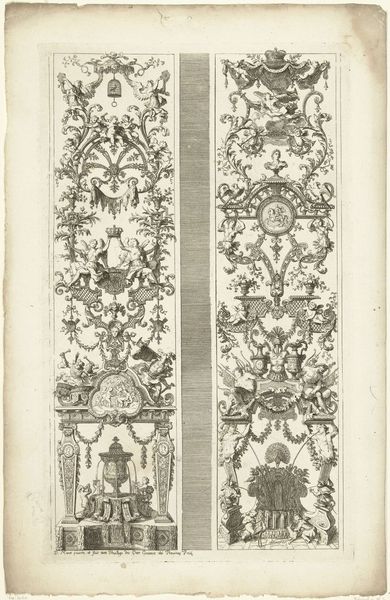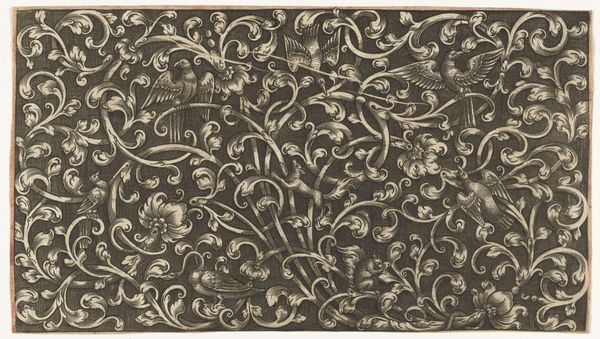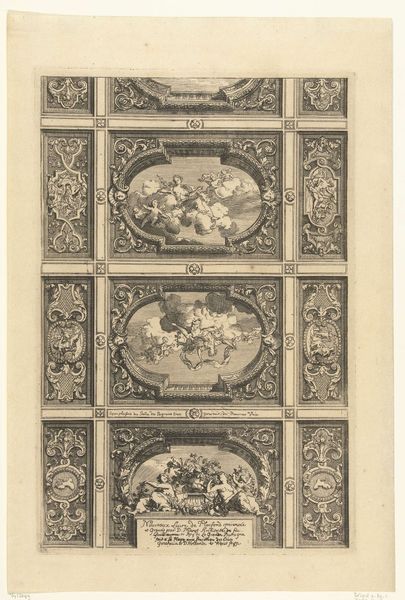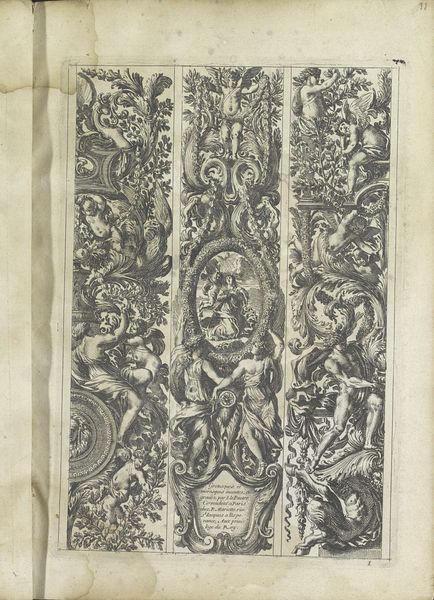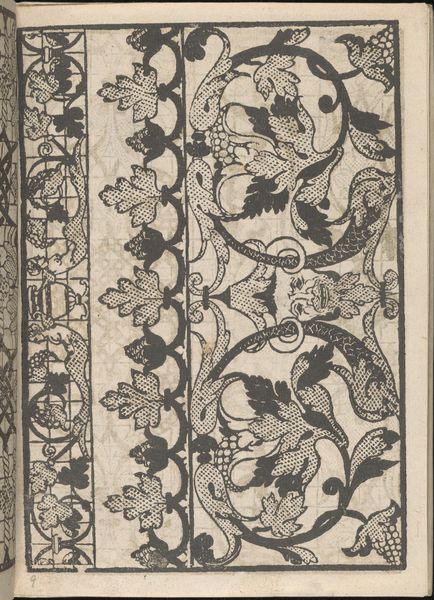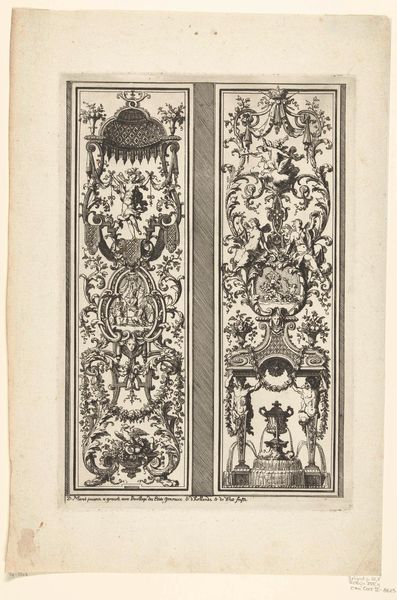
carving, print, engraving, ivory
#
table
#
carving
#
narrative-art
# print
#
old engraving style
#
classical-realism
#
figuration
#
11_renaissance
#
history-painting
#
northern-renaissance
#
engraving
#
ivory
#
miniature
Dimensions: height 143 mm, width 238 mm, height 340 mm, width 438 mm
Copyright: Rijks Museum: Open Domain
Curator: The Rijksmuseum holds a fascinating object—an ivory table featuring engravings inspired by the works of Beham, De Poss, and De Bry, crafted sometime between 1869 and 1887. Editor: The detail is incredible! So many figures, contained within such a structured, almost architectural design. There's a kind of intense narrative compression. Curator: Indeed. Consider the material—ivory. Its sourcing, the labor involved in both acquiring it and in the carving itself. We're talking about colonial trade networks, skilled artisans, and a very specific type of consumption in the 19th century. It really prompts a questioning of artistic value in relation to ethical practices. Editor: Absolutely. The choice of classical and religious figures is itself telling, as ivory became more sought after it represents more and more complex power structures. The table becomes an artifact of a social elite flaunting its access to resources and narratives reinforcing its status, particularly within the colonial context. I am wondering who the end user might be. Curator: It also connects to the printmaking traditions that circulated these images widely, enabling different levels of artistic interpretations. By having these reproduced, mass cultural adoption takes root. Think about the access this reproduction brings. The shift from single ivory piece to common piece of artwork creates its own dialogue. Editor: I also think of it being domestic artwork, something meant to impress on an everyday basis through its narrative of wealth, dominance and social standing. Do we have records indicating patronage or ownership, anything about how the materiality impacted how those outside such privileged spheres interpreted such artistic endeavours? Curator: Sadly, very little is known. The ivory could be understood in the wider context as being another one of the cultural power shifts underway. The engravers played with their art styles so that new meaning and visual form of their production could then become absorbed by new demographics. The work, as seen here, demonstrates both the continuity of a canon, and a break from it in its physical embodiment. Editor: Yes, absolutely. It brings forward a re-contextualized classical rhetoric to suit shifting societal standards while still serving class divisions. Thank you for sharing all this. It brings much of its history alive and its ethical complexity!
Comments
No comments
Be the first to comment and join the conversation on the ultimate creative platform.
